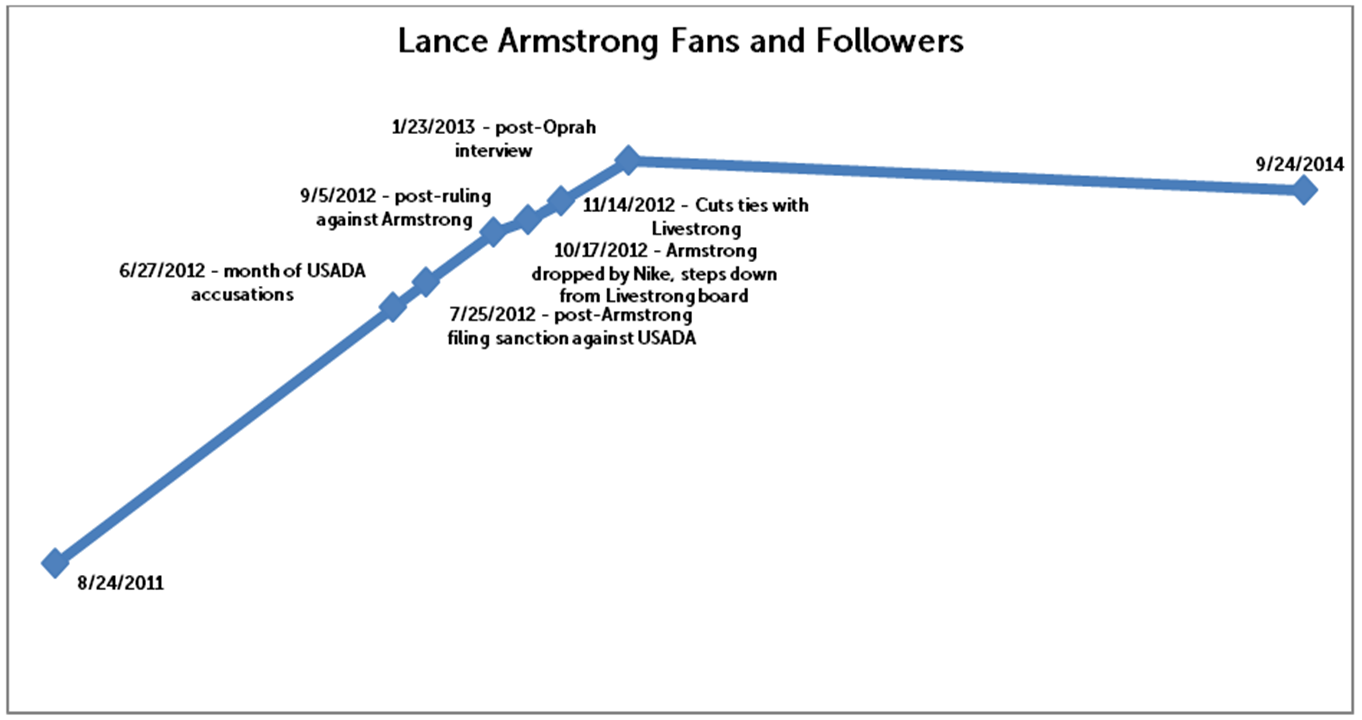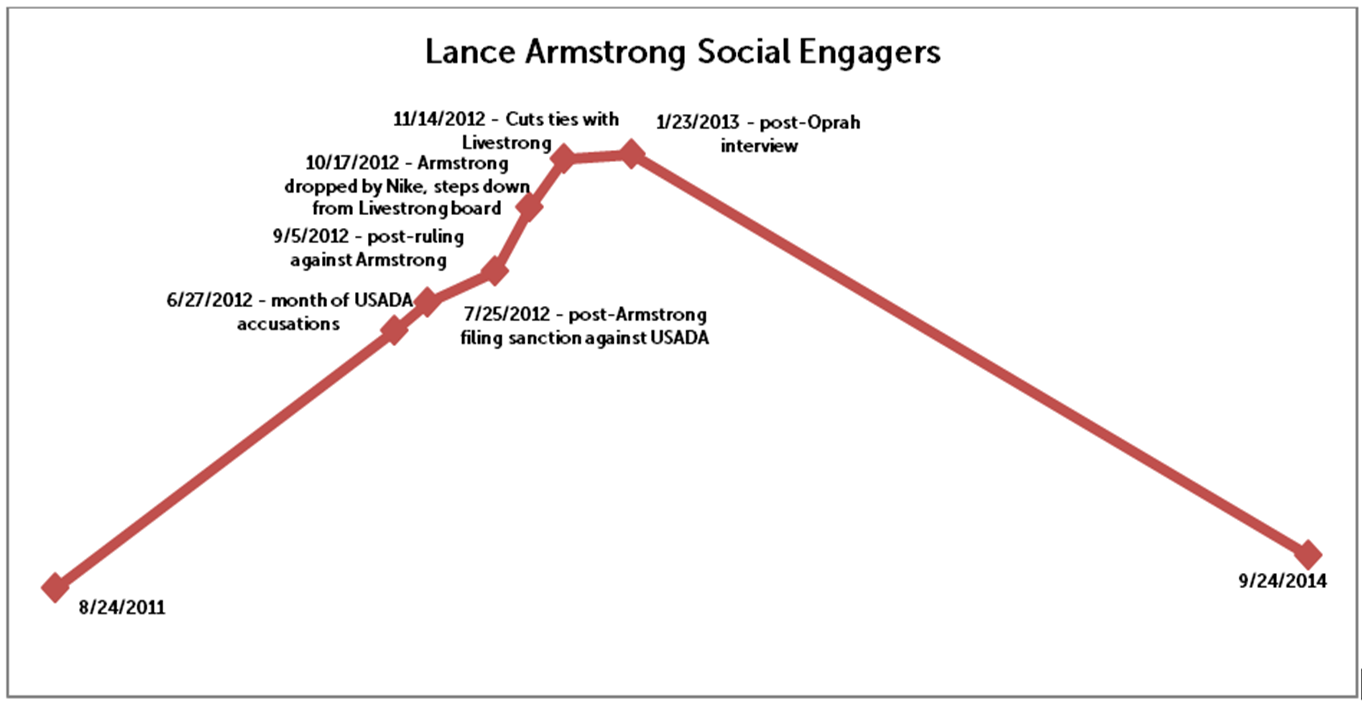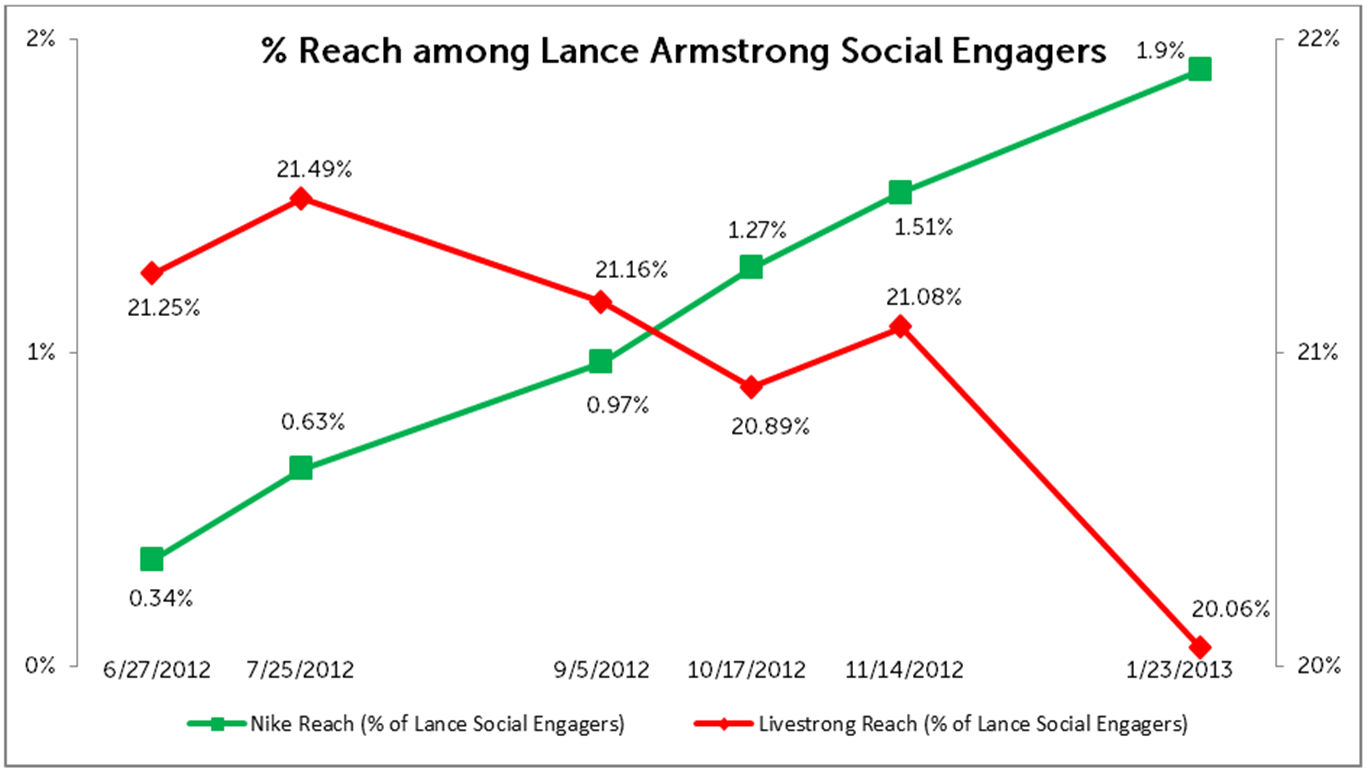When Good Partnerships Go Bad
At Affinity Answers, we are in the business of unlocking the power of mutual affinity to help our clients figure out which celebrities (or TV shows, websites, etc.) are most relevant to fans of their brand on social media. These insights have added a lot of value for clients, as seen in our case studies. However, mutual affinity cannot predict when celebrities will act inappropriately or how events might be judged in the court of public opinion. Today, when outrage on social media is more common than not, we thought it would be interesting to look at how people engage with these celebrities on social after a major scandal. Do fans of the brand become less engaged with the celebrity? Most importantly, what implications does this have for brands?
There has been arguably no greater recent example of a fall from grace than Lance Armstrong. After years of suspicion, leading to a massive investigation and lawsuit, the USADA ultimately banned Armstrong from cycling in August 2012 and stripped him of all of his record Tour de France titles from 1999 through 2005. All of his sponsors dropped him on the same day, an estimated loss of $75 million in deals, and the public heard his first admission of wrongdoing in a January 2013 interview with Oprah Winfrey. Among these sponsors, there is arguably none that offered a bigger deal than Nike, and none more personal than LiveStrong, the charitable organization Armstrong himself founded.

First, let’s look at fans of Lance Armstrong. In the run-up to the investigations and court cases in summer 2012, Lance was still adding fans and followers. However, neither of these measures is indicative of engagement. Think of how many times you may have liked a Facebook page to enter a sweepstakes and then never returned. A more accurate barometer of public opinion is the level of engagement – and that was through the roof! This may seem counterintuitive, but remember, this is not taking sentiment into account. The massive volume of posts and tweets during the height of his scandal certainly included supporters, but these were likely drowned in the more popular feeling of anger and outrage. Consider this phenomenon the 21st century version of the old saying, “There’s no such thing as bad press.”

On social media, though (and also in life), it comes down to the almighty dollar. The true test is if your brand is losing common social engagers with your sponsors. When Nike originally sponsored Lance Armstrong, it was likely that they believed he was a central sports figure of our time, and someone that current and potential purchasers of Nike products would believe represented the company’s values. On social media, this translates into a “conversion” of Nike social engagers into Lance Armstrong social engagers, and vice versa. For Nike, a good Litmus test of sponsorship success is when Lance Armstrong social engagers also came to post or tweet on their own pages.
The reasonable expectation would be that Nike social engagers would no longer also be Lance Armstrong social engagers. Interestingly, this is not the case; in fact the reach of Lance social engagers among Nike social engagers increased steadily throughout, and is still increasing nearly two years later. While Nike felt the need to distance itself from the disgraced cycler, the company’s social engagers did not.

Even more telling is what happens when we look at Armstrong’s charity, Livestrong. While it had some ups and downs through the scandal, the reach of Armstrong social engagers among Livestrong social engagers steadily declined following the aftermath of the Oprah interview. Apparently, social engagers of the charitable organization take the association with Lance Armstrong more seriously; after all, it is a foundation that is dedicated to eradicating cancer, which touches far more people, more deeply than an association with a brand.
So what does this all mean? The Lance Armstrong doping scandal can be viewed as a cautionary tale for celebrities and the brands they endorse for sure, but it also speaks to the power of mutual affinity. Mutual affinity is not just a measure that aligns with success in media and marketing, but over time, it accurately reflects consumer behavior. While brands certainly do not want to be entangled in scandal with their one-time spokespeople, it’s important to have a sense of how deeply this scandal impacts your consumers to appropriately gauge your reaction.
How will you harness the power of mutual affinity to understand your consumers better?


